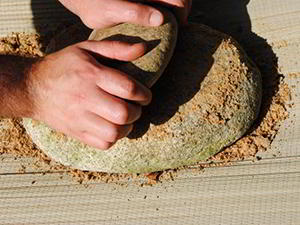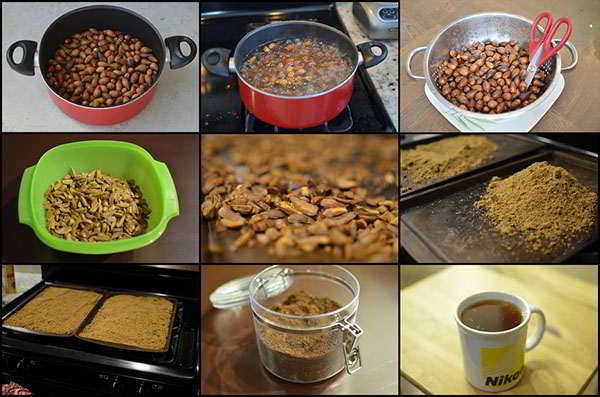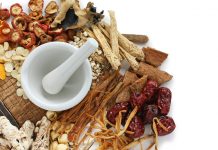Spring’s fresh growth attracts aphids in their thousands-sucking plant life, stunting their growth. Fortunately, aphids love new nettle shoots, which has many benefits for the garden – meaning you can use them as sacrificial plants, save valuable ornamentals; and can even hinder the growth of nettles. The birds get their delicacies, too.
Nature is giving us everything that we need. The problem is that most people have long ago lost the requisite skills and information to make use of all that nature offers. The insane part of it is, nature gives us an incredible abundance of food even in the middle of town. I think we all know of an oak tree somewhere in or around our neighborhood.
Acorns are a gem in the world of natural food, a diamond concealed in plain sight. In part, they make a perfect food for survival because they are so easy to find and harvest. Plus, acorns can be used in so many ways, including as a substitute for coffee and in a wide range of cooked dishes. These do provide a good nutritional level with nutrients including healthy fats, tons of protein, carbohydrates, some calcium and iron, and tons of magnesium, potassium, and vitamin B-6. However, you need to learn how to harvest and store these nuggets of protein in order to be able to use them.
Harvesting Acorns


It’s pretty quick to pick acorns-you just wait for them to fall off the tree. You must first be sure that you know which trees are oak trees and what an acorn looks like. Typical oak leaves and acorns are seen in the picture shown here.
When considering the harvesting of acorns, it is best to know which varieties of oak trees are in your area. Taking the time to identify the oak trees around you in the spring by looking at their leaves and referring to a tree book. When looking at their leaves, oak trees are much easier to recognize than by looking at their Acorns.
Related: These 6 Backyard Plants Can Turn Into Bread
Here are the types of oak trees and the type of acorns they produce:
- Emory Oak: Produces mild acorns that don’t need processing.
- White Oak: These produce blander acorns that are good for harvesting. The best white oak trees form which to harvest include the burr oak, the Swamp Oak, and the Oregon White Oak.
- Red Oak: These acorns are more bitter and will require more processing.
- Black Oak: These are the most bitter acorns and will need to be leached a lot to get rid of the bitter taste.


Emory Oak White Oak Red Oak Black Oak
Of course, from any of those trees you can harvest and eat acorns. It’s just that the bitterer the acorns are, the more they will need processing. The bitterness is attributed to a substance called tannins in the nuts. The more acorns have tannin, the more bitter they are. Plus, the tannins can cause an upset stomach, but these tannins can be removed, which we will speak about below.
If you’re searching for acorns to harvest; the best time to harvest is late in September and into October (climate can vary), but you can recover them through spring. The best thing to do is make sure that the day is dry and that’s early in the season. Go and just pick the acorns up from the table.
When selecting acorns, it is important to select nuts that do not have any visible holes in them. Weevils are particularly fond of acorns, so any sign they have bored through the nutshell indicates that the nut is no good. It is the weevil larvae that are the main concern, and only the nuts from which they emerged can be described. That’s right, it emerged I said. The weevil larvae come out from the inside of the nut, so you could get home from your harvest to find other weevil larvae infested nuts.
Shelling
When you get your acorns home, put them all in a large bowl of water is a good idea. This will enable you to detach the good from the bad. If t hey are good, they are going to sink. If it’s bad, they’re going to float. Once you have done that, you’ll want to dry them completely before shelling them. You can do so by setting them down for 15 minutes in a 150 degree oven. You can do that too by putting them in the sun for a couple of days. Drying them out will make it possible for the nut inside the shell to shrink slightly, making it easier to seal.
It is relatively easy to shell the acorns. If they’re still green, you can get into them with a knife. Otherwise, simply remove the cap (if not removed already), put the nut flat-side down, and strike the pointing end with a hammer. If the nut is longer and will not be at its end, only touch the nut ‘s side. Sometimes, it is best to put your acorns in water as soon as they are shelled, at least to make the acorn flour more aesthetically pleasing. The nuts will oxidize really quickly and if they do, the color of your flour won’t be as bright. The oxidation process is prevented by water.
When it comes to Red Oak acorns, the nut inside the shell has a skin on it which is very hard to extract. For this reason, boil the red acorns before shelling them and shell them while they’re still dry. When you do this, the skin and the shell will come off.
Related: This Common Driveway Weed is One of Nature’s Most Powerful Survival Plants
Removing the Tannins
OK, we’ve spoken about acorn bitterness and the need to eliminate the tannins that trigger it. Fortunately, that’s not hard to do. First, let’s think about the way the tannins are extracted quicker. You need to put the shelled nuts in water for this, and bring the water to a boil. When the water starts boiling, pour it away, add fresh water, and repeat. Repeat this as many times as needed to make the water run clearer (it starts dark) and the nuts go sweeter to taste.
But here’s the stuff. When you boil the acorns, you remove a starch present in the acorns that works in wheat flour much like gluten, allowing the acorn flour to bind to itself. You don’t need heat to dissolve the tannins, however, water can do that alone. The thing is, it will take days without the heat, rather than hours.


To remove the tannins from the acorns, particularly if you are going to grind them and use them as flour, you must grind them into flour and mix them in a ratio of 1:3 with the water. Put the mixture into a glass jar and hold in the refrigerator. You have to shake the container every day, and then dump out the water 12 hours later, replacing it with fresh water. Deleting the tannins with this process will take 1 to 2 weeks.
Drying
You’ll need to dry your acorns or the flour you’ve made until you’ve drained the tannins. The best approach is to spread them and set them out in the sun on a baking sheet. If this is not an option, you can use a dehydrator that will not destroy any of the nutrients, or you can use the lowest setting of the oven. If the acorns or the acorn flour are dried, you need to store it in the refrigerator. Alternatively, you can freeze it, but it must be kept cold, as it will easily rancid.
Food You Can Make
Acorns have such a wide variety of uses that they are curiously not part of our daily dietary choices. You should roast acorns first and foremost, and eat them that way. They are yummy!
These roasted acorns can also be grinded into a meal, and used as a great coffee substitute. If you don’t want to totally replace your coffee, you can still add a nutty flavor to your daily coffee with the roasted acorn meal.

As discussed above, acorns can be ground into flour that is great when baking. You can use it to bake the following:
- Bread
- Cookies
- Corn cakes
- Acorn porridge
- Pancakes
- Burgers
Used whole or in pieces, acorns can be used to make:
- Acorn brittle (as a substitute for peanuts)
- As a substitute for any nut in any recipe
- As a substitute for beans and legumes in soups and casseroles
- Sprinkled on the top of salads or mashed potatoes
Finally, you can grind acorns into a rich and yummy nut butter as with any other nut. Really, acorns, either whole or ground, can be applied in many ways. They make one of the best, easiest to find, and most nutritious foods for survival, but they are so plentiful and easy to process that you don’t have to wait until the end of the world as we know it to harvest and use those little beauties. They are available anytime and ready to take!





















